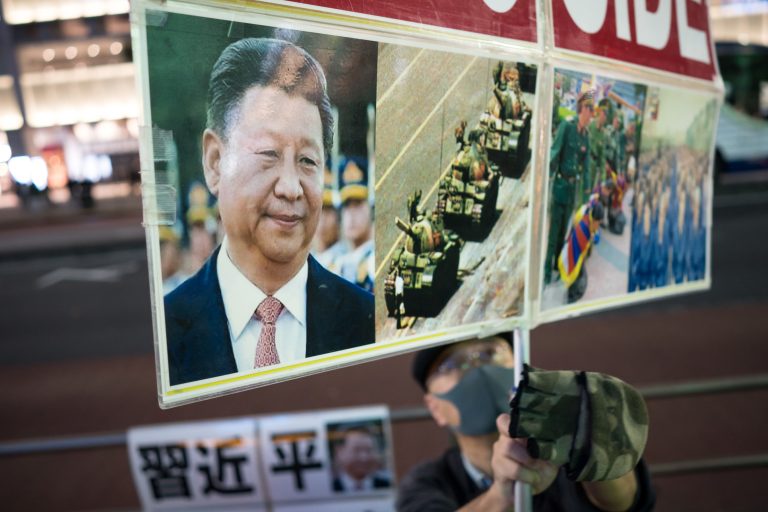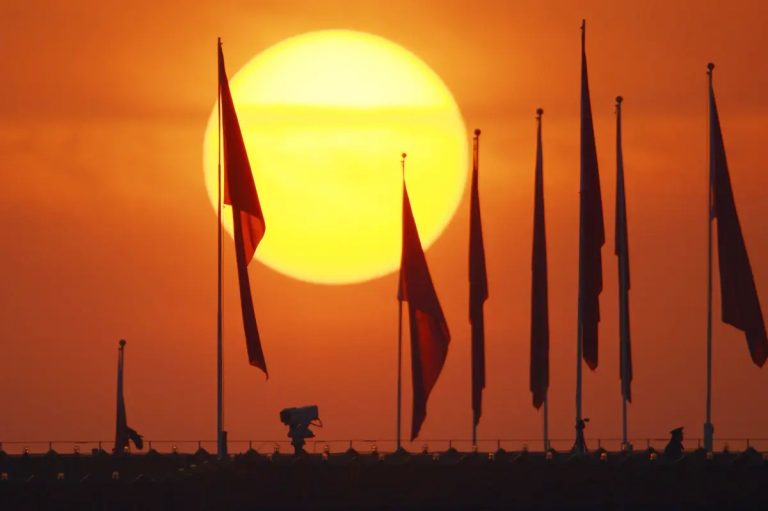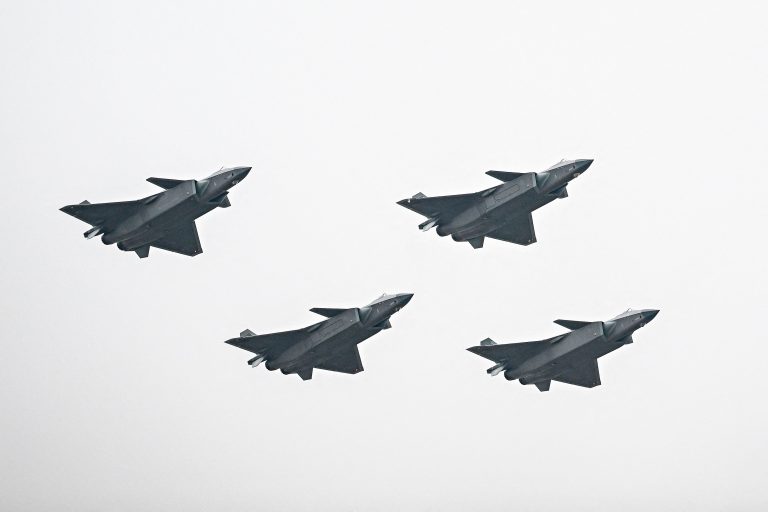In his New Year’s address, Chinese leader and general secretary of the Chinese Communist Party (CCP) Xi Jinping made an appeal for unity, saying that while “it is only natural for different people to have different concerns or hold different views on the same issue” due to China’s vast size and population, “what matters is that we build consensus through communication and consultation.”
Xi’s focus on reconciling “different concerns” and “different views” appears to be a reflection of growing social instability in China shortly after the conclusion of the 20th Party Congress in 2022 that saw Xi secure a third term as CCP chief.
But “zero-COVID” mishaps and Beijing’s sudden easing of the policy created problems that led to an outpouring of public anger towards Xi and the CCP, as well as disruptive labor issues. Xi’s standing in the Party also took a hit as many cadres and their family members have fallen ill or died since the lifting of the pandemic measures.
The credibility of the Party and its leader will be further tested as Beijing continues to struggle with the pandemic ripping across China and attempts to control the propaganda narrative. These pressures will incentivize Xi to not only deploy the regime’s security forces in an effort to maintain social order, but also double down on internal purges to stay ahead in the Communist Party’s “you die, I live” factional struggle.
Political forecasting
In early October, we analyzed why Xi Jinping could move quickly to reform his image after securing political gains at the 20th Party Congress. We argued that Xi could “conceivably get rid of ‘zero-COVID’” or modify it greatly, contrary to the view of mainstream China watchers at the time.
Success
You are now signed up for our newsletter
Success
Check your email to complete sign up
We further elaborated in early November that “Beijing will find ways to gradually move away from ‘zero-COVID’ even though it may never remove the policy from its books,” particularly because Xi needs to revive the floundering Chinese economy. Our analysis was soon affirmed when the Xi leadership issued 20 measures to “optimize” epidemic prevention and control on Nov. 11.
- Reading the Results of China’s 20th Party Congress
- Communist Politics Are Bringing Disaster to China–And Xi Jinping
Beijing’s move to ease “zero-COVID,” however, encountered the usual bureaucratic resistance from local governments. Some areas flip-flopped between relaxing and tightening control measures. Other areas kept their foot on the “zero-COVID” gas pedal. Things came to a head in two cities in the provinces of Xinjiang and Henan respectively.
The Foxconn factory in Henan’s Zhengzhou City had been enforcing so-called “closed-loop” quarantine since early November following an outbreak of COVID-19 on its campus. By late November, many workers had enough. Videos showed workers clashing violently with white hazmat-clad “anti-epidemic personnel” and local police in the evening of Nov. 22. Anecdotal accounts said that tens of thousands of workers had participated in the unrest. On Nov. 25, over 20,000 workers had left the company, according to Reuters.
Meanwhile in Xinjiang, where a strict lockdown had been implemented for over 100 days, tragedy struck on Nov. 24 when a blaze broke out in an apartment building in Urumqi City. The building’s inhabitants were unable to escape as the fire exits had been sealed off in compliance with “zero-COVID” restrictions. At least 10 people, including children, died in the fire.
The Xinjiang fire tragedy went viral on the mainland and sparked small-scale demonstrations in many parts of China. Students were seen waving blank sheets of paper in reference to a Soviet-era dissident joke to mourn the dead and protest the “zero-COVID” policy. On Urumqi Middle Road in Shanghai, youths were filmed shouting, “Down with the CCP! Down with Xi Jinping!”

The fierce outpouring of anger and anti-regime sentiment from the populace appeared to have jolted the Xi leadership into accelerating its move away from “zero-COVID.” On Dec. 7, Beijing introduced another 10 “optimization” measures on top of the 20 that were issued the previous month. Over the next few weeks, the authorities would roll back one restriction after another, including reopening China’s borders for the first time in three years on Jan. 8. Mentions of “dynamic zero-COVID” dropped precipitously in propaganda even though the policy remained on the books.
Xi had effectively gotten rid of “zero-COVID” — just as we had anticipated.
No respite
Xi Jinping may have believed that easing of his pandemic policy would relieve the Chinese people of their frustrations over the past three years and “rehabilitate” his image somewhat. Instead, resentment towards Xi and the CCP only grew as the regime’s healthcare system cracked under the weight of surging infections.
According to news reports, videos, and information circulating on social media, China’s hospitals were packed in many areas and crematoriums were overwhelmed; an internal report by the National Health Commission revealed that hundreds of millions were infected in the first 20 days of December alone.
However, the CCP authorities only reported 37 deaths since last month, and daily cases ranging in the thousands to low tens of thousands. The authorities also stopped issuing daily COVID-19 reports since Jan. 9; Chinese health officials said in December the regime would be switching to monthly reports as part of its plan to downgrade virus management, but did not provide a specific date for the change.
Overseas Chinese-language media reported that many senior CCP cadres and military officers, as well as their family members, have died amidst the massive wave of coronavirus cases. And just like the masses, Party elites are having trouble accessing medical treatment due to deficiencies with the regime’s healthcare system.
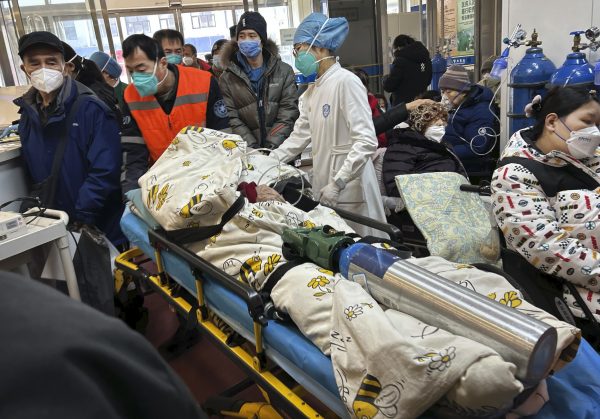
The CCP’s abrupt retreat from “zero-COVID” also created new labor problems instead of alleviating them. On Jan. 7, thousands of workers at the Zybio factory in Chongqing staged a rowdy protest, smashed equipment and products, injured some executives and labor agents, and tangled with local riot police after the company suddenly fired 8,000 temporary workers and withheld payment of their wages. Information from Chinese language media and social media suggested that Zybio, which manufactures COVID-19 test products and equipment, likely carried out its mass layoffs due to falling demand following the “optimization” of epidemic measures.
The labor issues and health crisis resulting from Beijing’s “zero-COVID” exit have impacted and are impacting a broad segment of the populace. Influential constituencies of the CCP have also been affected. Growing animosity towards Xi is eroding his authority and prestige (“quan wei”), pushing him closer to the edge of an erupting volcano and making him more vulnerable to political challenges.
New purges on the horizon
Xi Jinping is undoubtedly aware of his present vulnerabilities and has decided that offense is the best defense. The Xi leadership has spent the first two weeks of 2023 issuing propaganda and laying the groundwork for another round of anti-corruption investigations and purges.
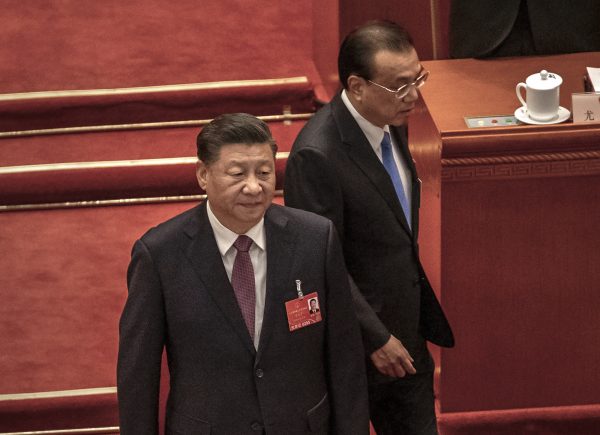
In a speech at the Central Commission for Discipline Inspection’s second plenary session from Jan. 9 to Jan. 10, Xi urged officials to “turn the knife inward, scrape poison from bone, take strong medicine to dispel the disease, and fight chaos with a heavy hand” to resolve the Party’s “unique problems.” He added that the fight against corruption is still “severe and complicated,” and called for “special rectification of prominent industrial, systemic, and regional corruption problems.”
The CCDI plenary session further identified key areas with “high concentrations of power, funds, and resources” where political supervision needs to be strengthened, including “finance, state-owned enterprises, political and legal affairs, as well as the grain purchasing and marketing system.”
The Xi leadership also hinted strongly at which factional forces were being put on notice. The purged officials featured in a four-episode anti-corruption documentary that aired on CCTV from Jan. 7 mainly hailed from the Jiang Zemin faction. On Jan. 10, Liu Yanping, the former head of the discipline inspection and supervision team of the Ministry of State Security, received a commuted death sentence (life imprisonment after two years). Liu belongs to the “Sun Lijun political gang,” whose members belong to or are associated with the Jiang faction.
Xi’s efforts to put away his political enemies before they can seriously damage his credibility could sway the latter to accelerate their plans to undermine Xi, including fermenting or aggravating social unrest. Escalating factional struggle in the CCP elite in turn raises the probability of Black Swans emerging and Gray Rhinos charging in China.
Larry Ong is a senior analyst with New York-based political risk consultancy SinoInsider. He was part of the SinoInsider team that forecasted the 19th Party Congress and 2018 Two Sessions personnel reshuffles with a high degree of accuracy.



